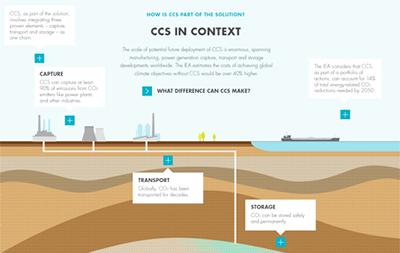Ground-breaking carbon capture and storage project

The University of Southampton is to play a major role in the world’s first ‘real world’ deep-water controlled experiment simulating emission from a submerged carbon dioxide storage reservoir.
The experiment is to take place in the North Sea, with the aim of further verifying the safety of offshore carbon dioxide (CO 2 ) capture and storage (CCS). This work will help provide greater reassurance around the safety of CCS operations in the future.
Small quantities of CO 2 will be injected into mud on the sea floor in the North Sea, 100km North East of Aberdeen. This site is in the vicinity of a depleted gas field and is a typical location that could be used for carbon dioxide storage.
Southampton is a key partner in this ground-breaking experiment, due to take place in 2018. The €16m STEMM-CCS (STrategies for the Environmental Monitoring of Marine CCS) project, co-ordinated by the National Oceanography Centre (NOC), will enable scientists to develop a system for detecting and quantifying the volume of any CO 2 released.
University of Southampton lead scientist Professor Jonathan Bull said: “A key focus will be developing techniques that will allow the identification and quantification of any CO 2 release from an underwater storage site (whether in gaseous or dissolved form). This project is a really exciting opportunity to develop innovative technology to address these problems.”
In order to ‘listen’ for the released CO 2 , the project partners will be developing acoustic and chemical sensors that can be fitted into robot-subs. Automated photographic analysis software will also be developed to enable the detection of any visual changes at the release site. Additional technology used by this project will include devices in the water and on the seabed to monitor changes in the chemistry, temperature, salinity and currents in the water.
All this technology will be launched at the site in Scotland a year before the controlled release in order to acquire an in-depth picture of the natural variability of the environment on a daily, weekly and seasonal timescale. This information will enable scientists to better differentiate natural changes from those resulting from the controlled release.
The STEMM-CCS project, has received funding from the European Union’s Horizon2020 project under the grant agreement number 654462. In addition to the industry partner Shell, this project will bring together the universities of Southampton and Heriot Watt, National Oceanography Centre, Plymouth Marine Laboratory, GEOMAR and MPI from Germany, NIVA, Uni Research and the universities of Bergen and Tromso from Norway, the Technical University of Graz from Austria and Seascape Consultants Ltd.
University of Southampton scientists involved include: Professors Jonathan Bull , Rachael James , and Tim Minshull , Dr Juerg Matter , Dr Romina Gehrmann , Dr Tom Gernon from Ocean and Earth Science and Professors Tim Leighton and Paul White from the Institute of Sound and Vibration Research. The University will receive €2.457m funding as part of the project, which runs from March 2016 to March 2020.